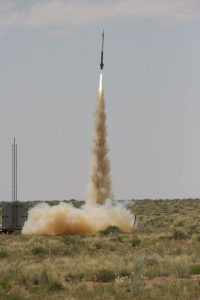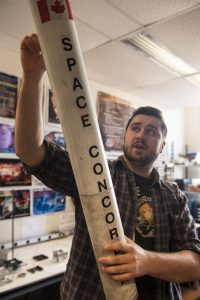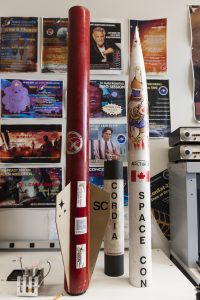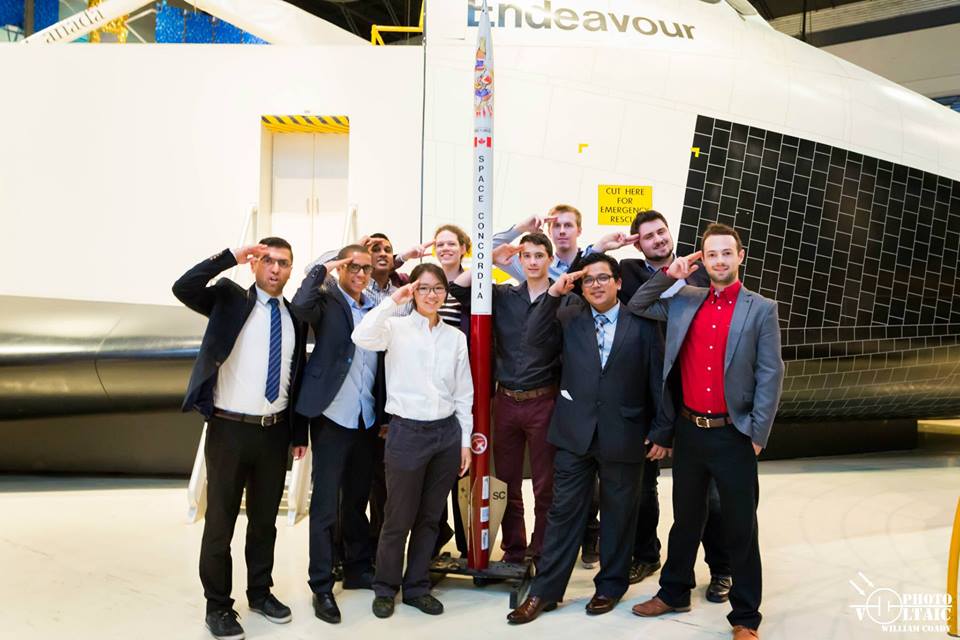The university’s Rocketry Division placed second in an international competition this summer
It only took 4.4 seconds of thrust for Space Concordia’s rocket Arcturus to blast off, reaching speeds as high as 1,000 km/h and soaring to nearly 13,000 feet. The flight was the success of nearly three years of work and represents everything president and chief rocket designer of Space Concordia Neil Woodcock hoped for when he joined the group at the start of the project.

“A lot of teams who went there, they just wanted it to go up,” he said. “I wanted it to go up, I wanted it to deploy all the parachutes where it should deploy the parachutes, and I wanted it to perform to design. We got almost all of those.”
Arcturus was the rocket built and designed by Space Concordia and launched as part of a competition hosted in Green River, Utah in June. They competed against 41 other universities from around the world at the 10th Intercollegiate Rocket Engineering Competition. Space Concordia’s Rocketry Division team placed second in the Space Dynamics Laboratory Payload Challenge.
The challenge required teams to build a rocket carrying a useful payload weighing around 10 pounds to reach 10,000 feet and return to the ground in one piece. The Rocketry Division had to set up their rocket near the launch site in the middle of a desert in central Utah. The process, according to Woodcock, takes over six hours.

“We went out into the desert early in the morning,” he said. “We were setting up from that time until around 11:30 a.m. We have to start up all of the electronics and put that into the rocket. We have to arm the recovery systems—that’s what deploys the parachutes when the rocket gets to its maximum altitude—and after that we have to bring the setup to the judges who inspect the rocket and make sure it’s safe for launch.”
The Arcturus actually overshot the required height, which Woodcock said caused them to lose some points in the judging. However, he said at the time he was just worried about the deployment of the parachutes. Otherwise, none of the $20,000 rocket might be salvageable.
“At any point, if anything goes wrong, you’re either going to lose a lot of the rocket, or the entire rocket is going to tear itself to pieces,” he said. “It’s a lot of panic, a lot of nervousness. But when our avionics guy said ‘the second parachute deployed,’ that’s when we knew everything was okay.”
Woodcock said while the rocket is entirely safe for another launch. “It’s probably not going to fly again. It is reusable, but it’s most likely going to go in a case somewhere.”

In the meantime, Space Concordia is working on a few other projects, including building a new satellite they hope to launch into space sometime next year.
Woodcock says breaking into more competitions has been one of Space Concordia’s toughest challenges. “Building satellites and rockets has a very high learning curve,” he said. “Getting the necessary information and experience and skills together to complete these projects is very difficult, it’s a huge challenge.”
But Woodcock said member retention has also been difficult.
“We have a lot of members who can be scared off by the very steep learning curve, so we’re really trying to do a lot to integrate them, to teach them what they need to know so hopefully these projects aren’t as intimidating,” he said.
One of the ways Woodcock said they will make actual rocket science more accessible is through smaller projects like launching premade rockets instead of creating one from scratch, like Arcturus. He also says the group will continue giving tutorials on topics like orbiting, spacecraft mission design and experimental rocket design.





